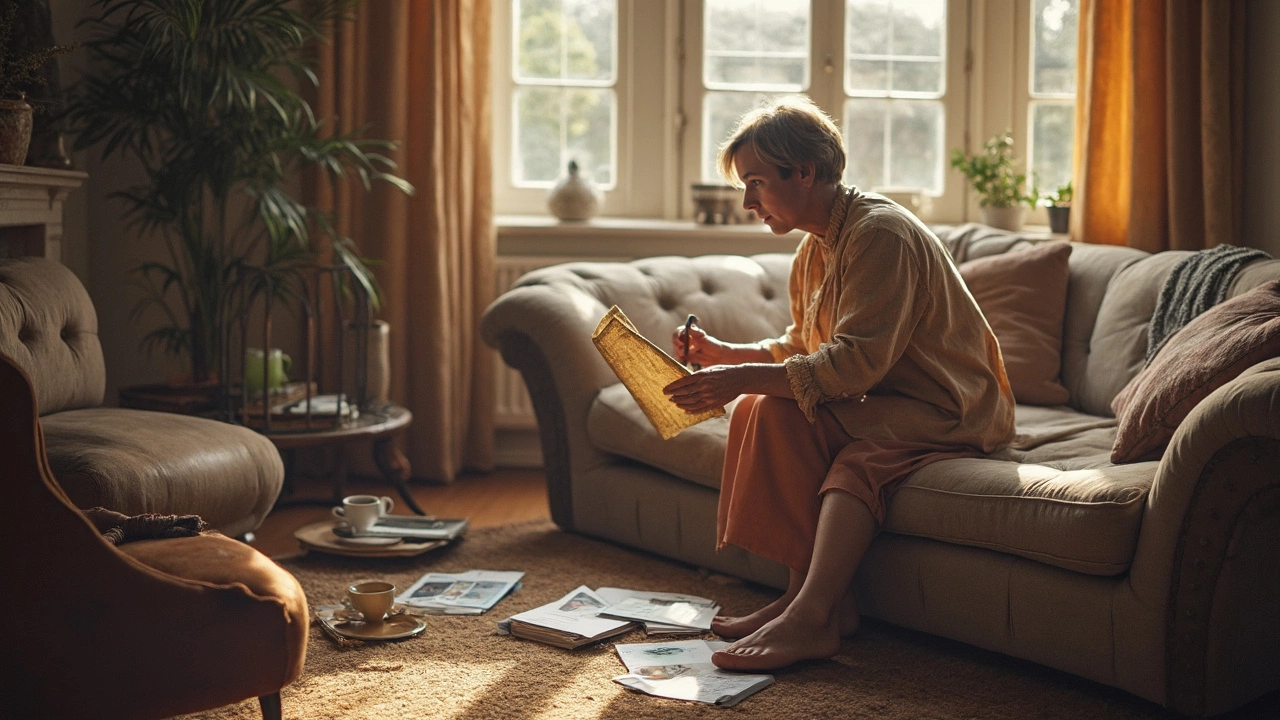Buy New Couch: How to Pick the Right Sofa Without the Guesswork
Staring at rows of sofas can feel overwhelming. You want a couch that looks great, holds up against kids and pets, and fits your living room layout. The good news? You don’t need a designer degree to make a smart choice. Below are the key things to check before you click ‘add to cart’.
1. Size Matters – Measure First
Start by measuring your room. Grab a tape, note the length of the wall where the sofa will sit, and leave at least 30 cm (12 in) of breathing space on each side. If you plan to watch TV from the couch, use the simple rule: sofa‑to‑TV distance should be about 1.5 times the screen diagonal. For a 55‑inch TV, that’s roughly 2.2 m (7 ft). This keeps the picture comfortable and avoids neck strain.
2. Build Quality – What Makes a Sofa Last
Durability boils down to three parts: frame, springs, and upholstery. A hardwood (like oak or ash) frame resists warping, while kiln‑dried wood prevents future cracks. Look for eight‑way hand‑tied springs – they give even support and last longer than cheap webbing. For the fabric, high‑density foam cushions hold shape, and performance fabrics (leather, microfiber, or polyester blends) resist stains and wear.
If you have kids or pets, leather or tightly woven microfiber are smart picks; they’re easy to wipe clean and hide scratches better than loose‑weave cotton.
3. Style and Comfort – Make It Yours
Think about how you’ll use the couch. A corner sofa maximizes seating for larger families but needs careful cushion arrangement – place tall pillows at the back for support, then layer lower cushions in front for a relaxed look. For smaller rooms, a sleek two‑seater with slim arms saves space while still offering comfort.
When testing comfort, sit down and lean back. Your lower back should rest naturally against the backrest, and the seat depth should let your feet touch the floor without feeling cramped. If you plan to turn the couch into a sleeper, check the mattress thickness; 5‑inch high foam offers a good mix of support and softness.
4. Budget Smartly – Get Value Without Overpaying
Set a realistic budget and stick to it. Mid‑range sofas (around £800‑£1500) often deliver solid construction and stylish design. Avoid ultra‑cheap options that use particleboard frames and low‑grade foam – they’ll need replacing in a few years, costing more in the long run.
Watch for sales and outlet stores, especially during holiday weekends. Many retailers offer free delivery and a limited‑time discount on same‑day orders, which can shave off 10‑20% of the price.
5. Extra Tips – Accessories and Placement
Adding a rug under the coffee table can define the seating area and protect flooring. Choose a rug that extends at least 45 cm (18 in) beyond the sofa’s front legs for a balanced look. Pair the couch with a coffee table that’s about two‑thirds the sofa’s length; a round table works well for tight corners, while a rectangular one fits longer layouts.
Finally, think about lighting. A floor lamp behind the sofa or wall sconces on either side create a cozy ambience for reading or movie nights.
With these basics in mind – size, build, style, budget, and accessories – you’ll feel confident walking into any showroom or browsing online. The perfect couch is out there; you just need to know what to look for.
Is It Cheaper to Recover a Couch or Buy a New One?
Thinking about saving money on a couch? This article breaks down the real costs and benefits of recovering your old sofa versus buying a new one. You’ll learn which option makes more sense based on price, quality, style, and even some hidden perks or pitfalls. If you’re stuck between skipping the showroom or revamping what you already own, you’ll get practical tips for every step. Uncover tricks to stretch your furniture budget and avoid common couch-buying regrets.
More
